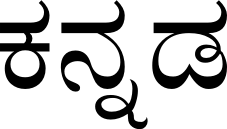Language/Kannada/Grammar/Prepositions
As a Kannada teacher with over 20 years of experience, I'm excited to help you learn about prepositions in this beautiful language! Prepositions are part of the foundation of grammar, as they help to make sense of the relationships between words in a sentence. In this lesson, we will focus on common Kannada prepositions that correspond to English prepositions such as 'in', 'on', 'at', 'with', and 'for'. Just like the diverse culture of Karnataka, the state where Kannada is spoken, you'll find these prepositions have fascinating nuances and uses. Keep practicing, and soon you'll be able to form sentences in Kannada with ease!
Introduction to Prepositions in Kannada
Prepositions are words that express the relationship between a noun or pronoun and other words in a sentence, indicating the direction, location, time, or manner. The use of prepositions in Kannada might be slightly different from what you are used to in English, but it's easy once you start learning and practicing them.
Handling prepositions in Kannada effectively is very important because they help in adding more meaning and context to sentences. Different prepositions are used to specify movement, position, time, or manner. Let's learn some of the most common prepositions used in Kannada.
Common Kannada Prepositions
Here are some common prepositions in Kannada, along with their pronunciation and English equivalent. Remember to practice speaking them aloud and try to use them in sentences to get better acquainted with them.
Examples:
| Kannada | Pronunciation | English |
|---|---|---|
| ಒಳಗೆ | oḷage | inside / in |
| ಮೇಲೆ | meḷe | on / above / over |
| ಬಳಿ | baḷi | at / near / next to |
| ಜೊತೆ | jote | with / together |
| ಗೋತು | gōtu | for / on behalf of |
Usage of Prepositions in Kannada
Now, let's see each of these common prepositions in action with some example sentences. Pay attention to how the prepositions relate different parts of the sentence and how they might vary from their English counterparts.
Inside / In (ಒಳಗೆ | oḷage)
- ನಾನು ಮನೆಯ ಒಳಗೆ (nānu maneya oḷage): I am inside the house.
- ಆ ಪುಸ್ತಕ ಪೆಟ್ಟಿಗೆಯ ಒಳಗೆ ಇದೆ (ā pustaka peṭṭigeya oḷage ide): The book is in the box.
On / Above / Over (ಮೇಲೆ | meḷe)
- ಆ ಹೂವು ಟೇಬಲಿನ ಮೇಲೆ ಇದೆ (ā hūvu ṭēbalina meḷe ide): The flower is on the table.
- ರವಿ ಮಹಾಶಿವರಾತ್ರಿಯ ದಿನ ಹೊಸ ಬಟ್ಟೆ ಧರಿಸಿದ್ದಾನೆ (ravi mahāśivarātriya dina hosa baṭṭe dharisiddāne): Ravi wore new clothes on Maha Shivaratri day.
At / Near / Next to (ಬಳಿ | baḷi)
- ಅವರು ಪಾರ್ಕ್ ಬಳಿ ನಿಂತಿದ್ದಾರೆ (avaru pārk baḷi nintiddāre): They are standing near the park.
- ನಮ್ಮ ಮನೆಯ ಬಳಿ ಒಂದು ಗ್ರಾಮ ಕ್ಷೇತ್ರವಿದೆ (namma maneya baḷi oṃdu grāma kṣētravide): There is a village field next to our house.
With / Together (ಜೊತೆ | jote)
- ನಾನು ನನ್ನ ಸ್ನೇಹಿತರ ಜೊತೆಗೆ ಬೆಳಗಾವಿಗೆ ಹೋಗುತ್ತಾ ಇದ್ದೇನೆ (nānu nanna snēhitar jotegē beḷagāvige hōguttā iddēne): I am going to Belagavi with my friends.
- ಅವರು ಅವರ ಕುಟುಂಬದ ಜೊತೆ ಉತ್ಸವದಲ್ಲಿ ಭಾಗವಹಿಸುತ್ತಿದ್ದಾರೆ (avaru avar kuṭumba jote utsavadalli bhāgavahisuttiddāre): They are participating in the festival with their family.
For / On behalf of (ಗೋತು | gōtu)
- ನಾನು ನನ್ನ ತಾಯಂದಿರ ಗೋತು ಸಮಾರಂಭದಲ್ಲಿ ಮಾತನಾಡುತ್ತಿದ್ದೇನೆ (nānu nanna tāyaṃdira gōtu samāraṃbhadalli mātanāḍuttiddēne): I am speaking on behalf of my parents at the event.
- ನೀವು ಯಾರ ಗೋತು ಫೋನ್ ಮಾಡುತ್ತಿದ್ದೀರಿ? (nīvu yāra gōtu phōn māḍuttiddīri?): For whom are you making the call?
Keep practicing these prepositions in sentences and listen carefully when native Kannada speakers use them in conversations. This will help you gradually familiarize yourself with their use and improve your Kannada language skills.
Conclusion
In this lesson, we covered various Kannada prepositions and their usage in sentences. Remember, practice makes perfect! Keep using these prepositions in your daily conversations to improve your grasp of the language. If you ever have any doubts, remember the cultural and linguistic richness of the Kannada-speaking region and believe that you can master Kannada prepositions with practice and dedication. Best of luck!

